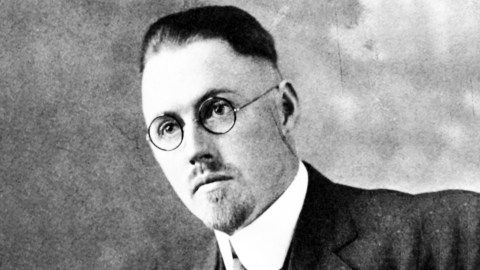John R. Brinkley: The Goat Testicle Millionaire

How did a man born into poverty become one of America’s most polarizing millionaires? And how did history forget him just as quickly as he rose? The story of “Doctor” John R. Brinkley is being told by a new documentary that renews his story: Nuts!. According to the film, Brinkley fundamentally transformed the workings of radio and advertising in North America. He was even instrumental to cultivating the popularity of country music.
Much of Brinkley’s fortune, influence, and success followed from fraudulent treatments he offered under the guise of being a doctor, an identity he assumed after purchasing a certificate from a diploma mill. The ailments he sought to treat often had one of two common characteristics: they were either sexual issues or conditions that were lethal and untreatable (at least at the time). The title of the film (and the focus of the trailer) alludes to one of his earliest and most peculiar schemes: inserting pieces of goats’ testicles into the scrota of men to cure impotence. Unsurprisingly, this practice was ineffective. Nevertheless, it became lucrative and helped to cultivate a massive, loyal following. Afterward, Brinkley would successfully sell numerous costly treatments that had no demonstrated effects. A question naturally emerges: how did he nevertheless manage to become an influential, polarizing millionaire?
Perhaps the answer lies in the kinds of ailments he purported to cure. Sexual practices were not widely discussed in Brinkley’s contemporary America. Thus, a sense of cultural opprobrium plausibly silenced individuals who may have otherwise spoke out to say, for instance, that inserting a piece of a testicle (from a personally picked goat) did not help to conceive a child. A consequence of this embedded censorship would be that false positives of people who, by mere coincidence, were able to conceive a child afterward would shape the dominant public view of the treatment. On the other hand, treatments for lethal diseases would be hard for the fatally uncured to speak out against.
How Brinkley managed to persuade people to opt into his treatments may still seem to be a puzzling question. However, his practices conform strongly to some characteristics Maria Konnikova attributes to successful con-artists. In particular, Brinkley exploited the trust of his patients by providing direct solutions to areas in their lives characterized by deep uncertainty. Seeing answers and meaning where there are none, Konnikova notes, is deeply embedded in our neurological systems. Moreover, she observes that overriding them with attentive discernment is not easy.
Reflecting on Brinkley’s career, we are then left with the challenge of possibly having to accept that there are no easy means to discern other cons and frauds as they emerge in our lives.





